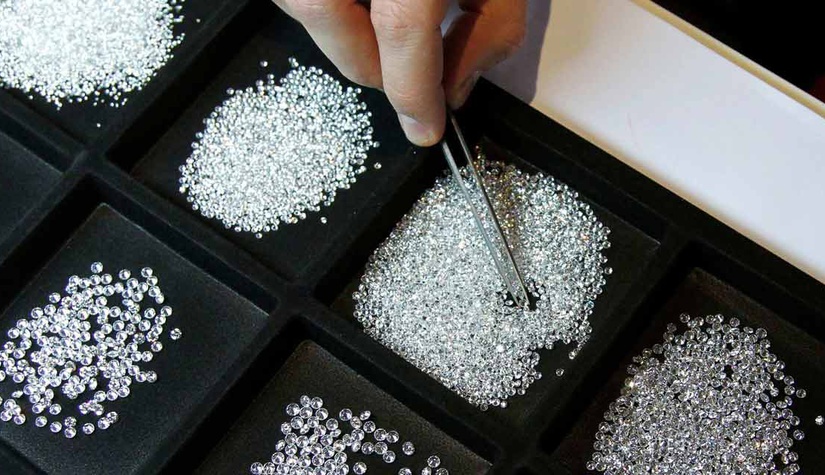
Distinguish natural and synthetic melee diamonds
Progress is a curious thing. You never know how it'll turn a well-known issue so that it became the most painful one. Synthetic diamonds have been known for a long time. In 2016 and 2017, on the pages of this magazine, we have already discussed how the mass appearance of synthetics can potentially affect the jewelry market. 2018 made its own adjustments. Today no one has problems with large synthetic diamonds, whether it is attached to the product or not. Now only a very arrogant swindler will try to sell a piece of jewelry with artificial, one- or two-carat diamonds. Recognition of large stones is no longer a problem.
The main tumble of the day – synthetic melee diamonds. Small stones for "dusting", with a diameter of 0.6 to 3.5 mm are bought and sold in thousands of carats. If you mix synthetic materials in a batch with natural diamonds, it will be incredibly difficult to identify. No magnifying glass or the simplest thermal and electrical conductivity detectors will help detect fraud. Synthetic diamonds do not differ in appearance or physical characteristics from natural stones. For further discussion, let us remember what synthetic diamonds are and what they are like.
All colorless, shiny stones, which may or may not be diamonds and which are fixed in your jewelry, can be divided into five types:
1. Genuine natural diamonds, with no signs of refining, that is, without obvious human intervention in the natural structure of the stone.
2. Natural diamonds whose color is enhanced using HPHT technology (High Pressure at High Temperature). Not all diamonds are amenable to such treatment. This method is mainly used to improve the color of relatively large natural stones, weighing from 0.5 carats. Visually, such diamonds are no different from not-refined ones. The fact of improving color can only be revealed in the course of a laboratory test.
3. HPHT synthetic diamonds (the same “High pressure at high temperature”). They are entirely artificial, created in special machines. In terms of chemical composition and physical properties, these stones are almost indistinguishable from natural diamonds. Until recently, HPHT synthetics had only a few distinguishing features. These were mainly: unusual luminescence and magnetic metallic inclusions. Using longwave UV, it was possible to notice a specific pattern in such stones - the “cross,” and the luminescence color was usually yellowish-green or green. However, due to the improvement of technology, these signs are less likely to appear in modern synthetic diamonds. You even might get HPHT synthetics without luminescence and without magnetic metallic inclusions.
4. CVD synthetic diamonds (chemical vapor deposition technology). Compared to HPHT, this is a more modern method of diamonds synthesis. There are few known key signs of CVD stones. This is mainly an unusual color of fluorescence (orange), but there are cases when grown CVD diamonds do not fluoresce at all or show a very real blue shade of natural diamond in a short and long wave UV.
- CVD synthetic diamonds, the color of which is enhanced using the HPHT technology. It is mainly applied to stones of the P-T color of the GIA 4C color range for colorless diamonds. Using this type of treatment, stones with a noticeable yellow or yellow-brown hue are enhanced to the color I GIA. The fluorescence hue may change from orange to natural bluish or not quite natural bluish-green. The effect of phosphorescence may occur if, after exposure to longwave UV, the diamond will continue glowing independently in the dark from a few seconds to several tens of minutes.
We will not discuss the option of imitating diamonds in this article since it is not a problem to distinguish a natural or synthetic diamond from glass, cubic zirconia, moissanite or titanite.
Unfortunately, despite the detailed description of synthetic features, none of the listed features make it possible to reliably distinguish artificially grown diamonds from natural ones. The exact answer can be obtained only in the course of spectral analysis. However, this equipment is far from being everywhere.
And yet, a reliable key sign of synthetics exists, though you won't see it with the naked eye. We are talking about the content and distribution of chemical elements nitrogen and boron in the diamond crystal lattice. Depending on the presence or absence of nitrogen atoms, as well as the nature of their distribution in the crystal lattice of a mineral, diamond may be one of five types. All of them are shown in Table 1.
Table 1. Classification of types of diamond according to the content and distribution of nitrogen and boron atoms in the crystal lattice.
|
Type of diamond on the content of nitrogen and boron |
Colors |
Natural |
Natural, refined HPHT |
Synthetic HPHT |
Synthetic CVD |
|
Type Ia, Subtype IaA |
Colorless, yellowish, brownish |
Frequent (up to 98% of all natural diamonds) |
-- |
-- |
-- |
|
Type Ia, Subtype IaB |
Yellow, brown, yellowish, brownish |
Frequent (up to 98% of all natural diamonds) |
Frequent |
-- |
-- |
|
Type Ib |
Yellow, brown |
Rare (0.1% of all natural diamonds) |
-- |
Frequent |
-- |
|
Type IIa (do not contain nitrogen) |
Colorless |
Rare (1.8% of all natural diamonds) |
Rare |
-- |
Frequent |
|
Type IIb (contain boron) |
Blue, dark-blue |
Rare (0.1% of all natural diamonds) |
-- |
Rare |
-- |
Most of the modern devices distinguish grown stones from natural ones precisely by the type to which the diamond belongs. In other words, if your stone belongs to Type IaA, then, at present, there are no known problems with this stone and there can not be. Any other type of stone (IaB, Ib, IIa, IIb) means that your diamond needs to be examined in the laboratory in more detail since it can be both natural and synthetic.
The modern market is filled with expensive and cheap devices for the operational examination of stones: screeners and diamond identifiers. There is a big difference between these two types of devices. The screener reveals only 100% natural stones of type IaA. In all other cases, the reading of the device will be: “additional research is required”. The identifier gives a complete and detailed answer to the question about the origin and the specific type of diamond. Naturally, screeners are in most cases much cheaper than identifiers.
The stark reality is that often neither the jeweler or appraiser are interested in scientific, gemological details about the chemical composition and type of diamond. They need to know only if this is a natural stone. Therefore, most often jewelers use screeners that are not so expensive and are ready to give an almost instant answer to the question of the nature of their origin.
We come to the main issue. The main problem of the modern diamond market is melee. How can you check, say, a thousand small diamonds? Who will do this and how much time should be spent on it? The key question is: how accurate are modern tools? In the description of some models of devices, accuracy is not specified at all, in other cases, the probability of an error of 1-5% is mentioned. It makes sense to consider some models of devices that are designed to help jewelers in their war with synthetic melee.
Today, you can find dozens of types of screeners and identifiers on sale, which allow distinguishing artificial diamonds from natural ones. The price range for these devices is quite wide: from $ 500 to $ 150,000 per device. The functional properties of these devices are also very different: some will not only analyze your stones but also sort them according to the classification, while others will only allow determining whether the test diamond belongs to the type IIa (synthetic CVD) or Ib (synthetic HPHT).
The main question that should be answered before starting the search for the device is whether your company works only with loose diamonds or periodically you have a need to check the finished products with already fixed stones. This is a factor that greatly affects the price of the device.
The most expensive devices on the market are high-speed melee testers, mainly intended for large players in the jewelry market.
One of the most expensive devices is M-Screen Plus, the development of the HRD lab. This device with a cost of about $ 90,000, allows to check up to 15,000 stones per hour, which is priceless when working with melee. Diamonds under check should be in the D-J color range, weighing from 0.005 to 0.2 carats. The instrument automatically sorts all the incoming stones into three categories: natural, potentially lab-grown or HPHT subjected to refining color, and imitation diamonds (cubic zirconia, glass, moissanite, etc.).

[Photo 1. Screen M-Screen Plus. HRD Antwerp Photo]
The new version of the device “AMS2” by IIDGR and DeBeers costs $ 45,000. The device can automatically process up to 3,600 loose stones per hour and sort them into four categories: natural, synthetic, “additional research is required” and imitation. The device works with melees of round cut, weighing from 0.0033 to 0.2 ct, as well as with fancy cut weighing from 0.01 to 0.2 ct.
Now let us discuss several models that allow exploring even fixed stones.
The ALPHA II Diamond Analyzer, a co-production device by Bruker and HRD Antwerp, is well known on the market. For an amount of approximately $ 30,000, the user receives a device that in less than a minute conducts a full inspection of a diamond using the FTIR method and outputs a pdf file that shows the IR spectra of the stone examined, as well as its type and nature of origin. Using this device, no "additional research" of the diamond is required, the answer that the device gives is unequivocal. It is possible to check both loose and fixed stones. The device is one of the few identifiers on the market. It works slowly, but scrupulously and reliably. The very case when the user wants to know for sure: did he get a natural type IIa or is it a grown CVD.

[Photo 2. The ALPHA II Diamond Analyzer ID. HRD Antwerp Photo]
GIA id100 will cost you $ 3995 (according to information from the official website for November 2018). The device distinguishes natural diamonds of type Ia from all the others: synthetic, refined, refined synthetic and simulants. That is, this is a typical screener. The diameter of stones is from 0.9mm to 4.0 mm, weight from 0.005 to 0.25 ct. The color range is not specified, only about colorless and almost colorless stones are mentioned. If we assume that the “near colorless” read by GIA is G-J, then the range of colors analyzed for this device should be D-J. The average detection time for one stone is less than two seconds. Principles of operation of the device are not mentioned, except the fact of using advanced technology spectroscopy.

[Photo 3. Screener GIA id100. Photo GIA]
Perhaps the most interesting and original solution to date is presented by the Israeli company "Yehuda". Their device, called “Sherlock Holmes”, which is based on a mobile phone, allows almost instant investigation of both loose diamonds and fixed stones. The company itself claims about the achieved level of accuracy of 99%. The device costs about $ 5000.

[Photo 4. The detector of CVD and HPHT diamonds "Sherlock Holmes". Yehuda Photo]
In addition to the above, there are several inexpensive, pocket devices on the market, what's known “for individual entrepreneurs”. For example, the “Screen 1 CVD Tester” models by SmartPro and “Synthetic Diamond Screener II” by the well-known manufacturer of jewelry equipment Presidium. Both devices cost about $ 500. Working range of colors from D to J, stone weight from 0.01 to 12 carats. The detection time is about 2 seconds. Unfortunately, nothing is known about the accuracy of these devices, apparently this is a topic for a separate research. However, if you add to one of these devices a combined heat and electric conductivity tester costing about $ 100, you can get a very inexpensive solution for pawnshops and small jewelry stores that want to convince the buyer of the purity of their stones.
[Photo 5. Screen 1 CVD Tester screener and combined Chinese-made heat and electric conductivity tester]
Finally, we should separately mention the domestic device. In 2018, the Russian company ALROSA finally presented a commercial version of its diamond screener called “ALROSA Diamond Inspector”. As of October 2018, this device cost about $ 7,500. The device can distinguish natural diamonds from synthetics, HPHT treatment and imitations. It takes 47 seconds to analyze a stone, the weight of the diamonds under investigation is from 0.03 to 10 ct. A distinctive feature of this device is that it uses three methods for determining a stone: Raman scattering, photoluminescence and spectroscopy in the visible range.

[Photo 6. ALROSA Diamond Inspector Screener. Photo ALROSA]
Unfortunately, we did not manage to find out any details about the accuracy of the device, and also about whether it is planned to somehow increase the speed of its work. The big question is the lower weight limit of 0.03 ct. For the standard Cr-57 diamond, such a weight corresponds to a 2.0mm stone diameter, while the main problem is observed on the market of so-called “melee stars”, diamonds weighing from 0.001 to 0.025 ct, which corresponds to a diameter of stones from 0.6 to 1.9mm.
You can call it luck, but we finally managed to get live samples of synthetic HPHT diamonds for testing. According to the seller, who allowed exploring the stones - this product is manufactured in China. Two melee stones, weighing 0.01 and 0.03 carats, were at disposal of the author.
When examining using a microscope, no features were noted. According to the purity of diamonds, they can be attributed to VS category, the color G-I, that is, the most popular category of dusting. The luminescence of the stones is very weak orange; in the daytime, it is simply impossible to see it. The main feature of these diamonds is electrical conductivity, therefore a combined device for distinguishing between diamonds and moissanites indicates that these are moissanites. But the second device - a screener of synthetic diamonds, for the first time clearly indicated the synthetics in both cases. It clearly worked on both stones 0.01 and 0.03 ct. Analysis time was 2-3 seconds.
Most likely, Chinese manufacturers will soon get rid of electrical conductivity and the moissanite tester will stop responding to HPHT. Only screeners will remain and their use is likely to become a tough necessity.

[Photo 7. HPHT 0.03 ct under the microscope]
[Photo 8. Subtle orange fluorescence]
[Photo 9. Electrical conductivity of a Chinese HPHT diamond. Tester reacts to a diamond like moissanite]
[Photo 10. Checking the stones in the screener]
[Photo 11. Screener confidently shows HPHT / Synthetics]
At the end of the conversation, I would like to voice another problem related to synthetic melee, which is spoken by Messrs. Richard B. Drucker and John S. Phillips in the article “Diamond screeners / testers” [1]. Suppose you purchased a ring with a dusting of small diamonds at a retail store and took it to an expert who has a device for determining synthetics. The device showed that some of the stones in your ring "require additional research." These are probably diamonds of Ib or IIa types, which are more likely to be synthetic than natural.
The question arises, how should a buyer act in such a situation? Formally, diamonds are attached to the ring. Screener, which is available at the store does not show anything special. Who should deal with the problem of identifying synthetics, pay for the expertise and take all other actions? Buyer or seller? The seller does not see the problem, he has a reliable supplier, his device says that everything is fine with the stones. Determining the nature of the origin and certification of a diamond melee can cost a considerable amount. And what if it turns out that the expert detector showed an erroneous result? Formally, the expert is not to blame - he is not responsible for the actions of the device. Who to sue? Device manufacturer?
The wide occurrence of synthetic diamonds in the jewelry market is not only the problem of distinguishing the nature of stones. It is also a lot of serious ethical and legal questions that are yet unanswered. Some manufacturers of synthetic stones have seriously attended to the creation of the brand and market share. On the one hand, jewelry with natural diamonds is expensive, prestigious and the price for them will either rise or remain stable, there is no third. On the other hand - jewelry with synthetic diamonds. These stones will be cheaper from year to year, nevertheless, they will continue to remain diamonds, which have practically nothing to do with their natural counterparts. That is only beginning, so mixes made from artificial and natural melee in one product are still possible. Most likely, in the near future, the market is waiting for qualitative changes not only by improving the quality of diamond expertise but also because additional legislative regulation is likely to emerge. This process is already being discussed at the international level and it certainly will not bypass our country. Maybe now is the time to look for a niche in the emerging market of synthetic diamonds?
[1] «DIAMOND SCREENERS/TESTERS» by Richard B. Drucker, GIA GG, Honorary FGA and Jon C. Phillips, GIA GG, AGS CG, «GEMGUIDE», SEPTEMBER / OCTOBER 2018
 Author: Alexey Lagutenkov / https://www.facebook.com/alagutenkov
Author: Alexey Lagutenkov / https://www.facebook.com/alagutenkov
Freelance expert gemologist. Graduated Gemologist G.G. GIA. Accredited Jewelry professional A.J.P. GIA. Master of Business Administration (Kingston, UK). Author of the bestseller book “Precious gemstones”
---------------

АНОНС!
В ноябре вышла в свет новая книга Алексея Лагутенкова «Большой Иллюстрированный Гид». Из этого великолепно иллюстрированного издания вы узнаете много нового о драгоценных и экзотических — коллекционных камнях. В книге приведены советы по уходу за ювелирными украшениями. Особое внимание в книге уделено целебным и метафизическим свойствам драгоценных минералов.
Издание можно прибрести на book24.ru



Материал опубликован в ЭКСПО-ЮВЕЛИР №3(106) сентябрь - ноябрь 2017
ПОДЕЛИТЬСЯ В СОЦ. СЕТЯХ:
Другие материалы из раздела "Геммология"
Рынок бриллиантов: Продавать или не продавать, вот в чем вопрос
17.09.2024 / Геммология / Виталий Сайко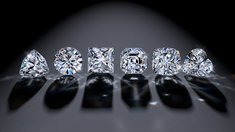
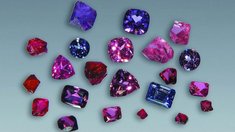
Оценка цветных ювелирных камней. Знакомство с «Миром Цвета» от GemGuide
24.08.2021 / Геммология / Алексей Лагутенков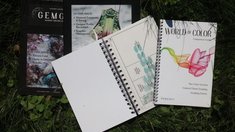

Географическое происхождение изумрудов как современный инструмент продаж
19.01.2021 / Геммология / Юрий Шелементьев
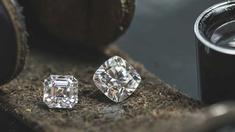
КАТЕГОРИИ
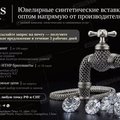 АМИС ГРУПП, ООО
АМИС ГРУПП, ООО Pistachio Jewellery House
Pistachio Jewellery House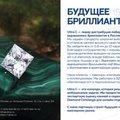 УЛЬТРА СИ ТРЕЙДИНГ
УЛЬТРА СИ ТРЕЙДИНГ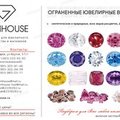 Gemhouse
GemhouseПОДПИШИСЬ НА ЮВЕЛИРНЫЙ ВЕСТНИК
Введите имя и адрес электронной почты, чтобы подписаться на рассылку





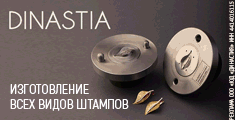




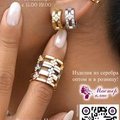

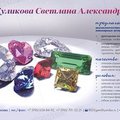







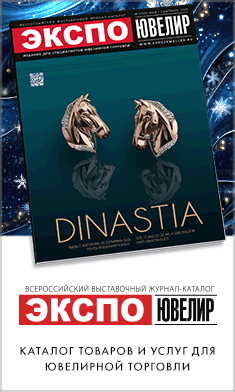
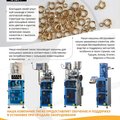
Оставить комментарий
Для того, чтобы оставить комментарий,
авторизуйтесь на портале или зарегистрируйтесь